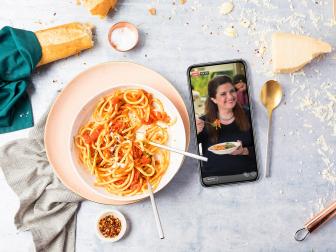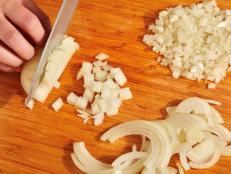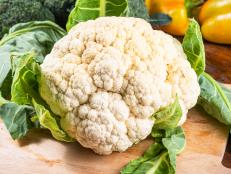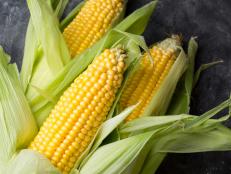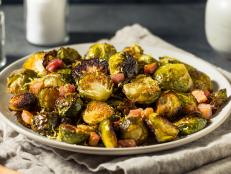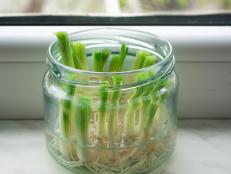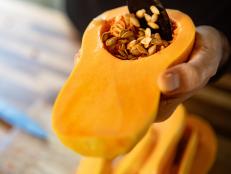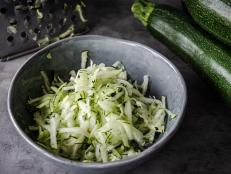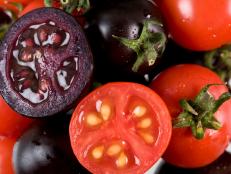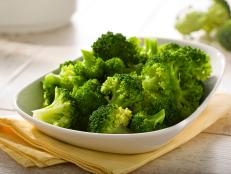4 Clever Things to Do with Veggie Scraps
Think twice before you toss out your vegetable scraps; you could be missing out on your new favorite snack!
Get a Premium Subscription to the Food Network Kitchen App
Download Food Network Kitchen to sign up and get access to live and on-demand cooking classes, in-app grocery ordering, meal planning, an organized place to save all your recipes and much more.

Wanwisa Hernandez / EyeEm
Here at Food Network Kitchen, we don’t waste a drop. Our chefs make the most of all the ingredients they use and see the beauty in saving every scrap for use in a later dish. Ever wondered what we do with all those carrot tops, broccoli stems, onion skins and kale ribs hanging around the kitchen? Well, there are plenty of inventive ways to reuse the bits you’ve probably been throwing away, and they’re surprisingly packed with flavor. Here are some of our favorites.
Broccoli Pesto
Pesto is perhaps one of the most versatile sauces in our culinary arsenal and can be made with just about any green vegetable you have on hand. It’s the perfect way to use up excess kale or spinach, wilting herbs and parts of vegetables that you might normally throw away (hello, carrot tops!) When making her Bacon and Broccoli Salad class on the Food Network Kitchen app, Kelly Senyei suggests saving your broccoli stems and incorporating them into a rustic, hearty pesto. Yum!
Babaganoush
Eggplant is delicious on pizza, as a grilled side or a meat-free main. However, cutting into an eggplant inevitably means leftover bits that often get tossed out. Vivian Chan’s solution? Make babaganoush! In her Eggplant Ricotta Bites class, Viv recommends using any eggplant scraps and blending them up with the usual herbs and spices for a quick and easy dip.
Succotash
Summer means an abundance of sweet corn, but if you’ve eaten your fill of corn on the cob and have a few extra ears laying around, turn it into Stuart O’Keefe’s favorite summer side. In his Succotash Summer Casserole class, Stuart shows us how this simple recipe yields a hearty and refreshing side dish that can be made using leftover corn. Scrape the milk from the cobs for even more flavor!

Vegetable Stock
Stock is perhaps the easiest and most obvious way to use vegetable scraps, but it’s also the most useful. Justin Chapple’s shows a favorite hack in his Pickled Beet Gazpacho class. Freeze your carrot, celery, onion or garlic scraps in a large zip top bag to have on hand the next time you want to boil up a pot of stock. That way, the scraps will stay fresh until you’re ready to use them, without stinking up your refrigerator.
Look out for more tips and tricks for reusing your vegetable scraps in the Food Network Kitchen App.
Related Links:
























